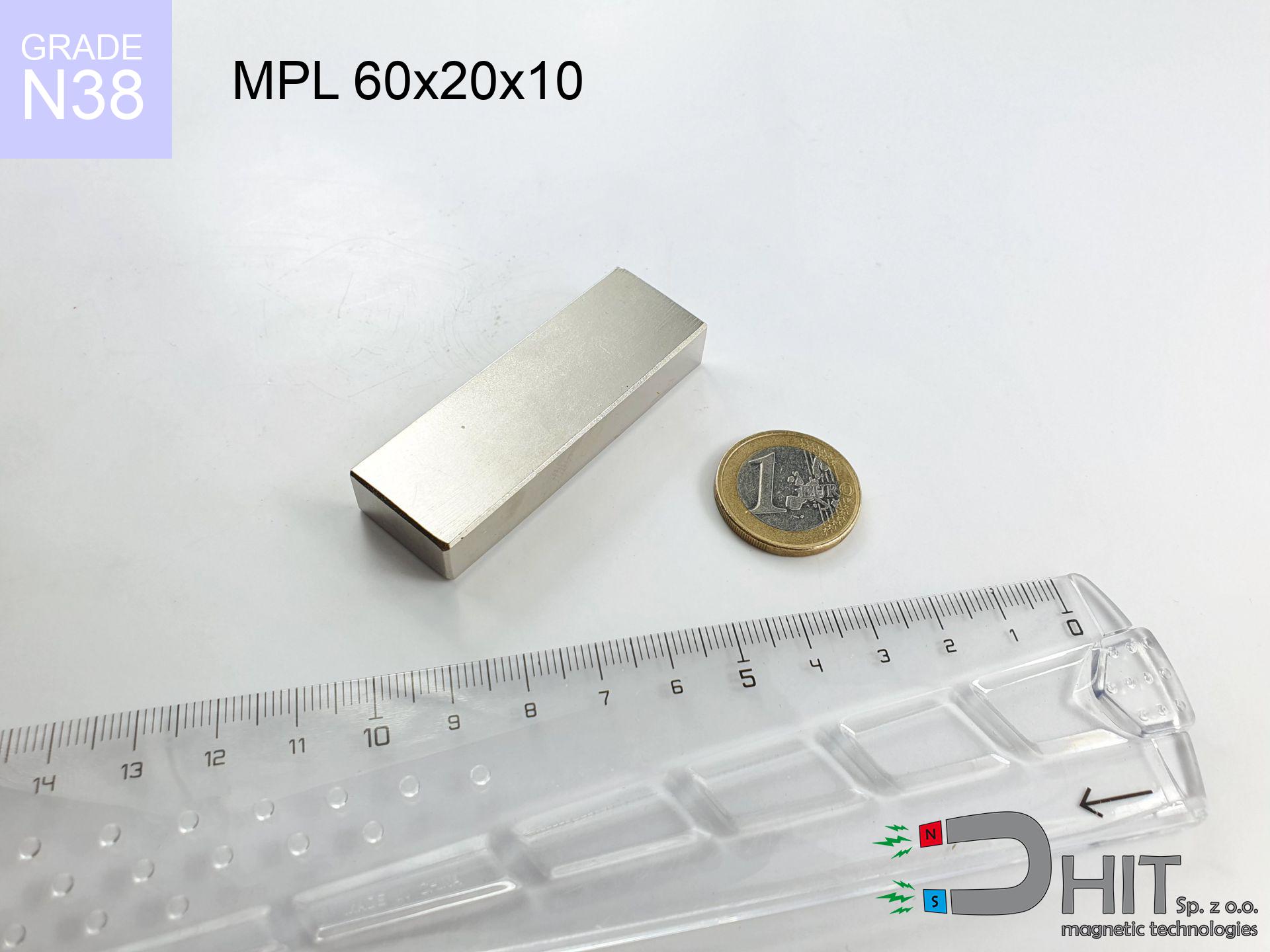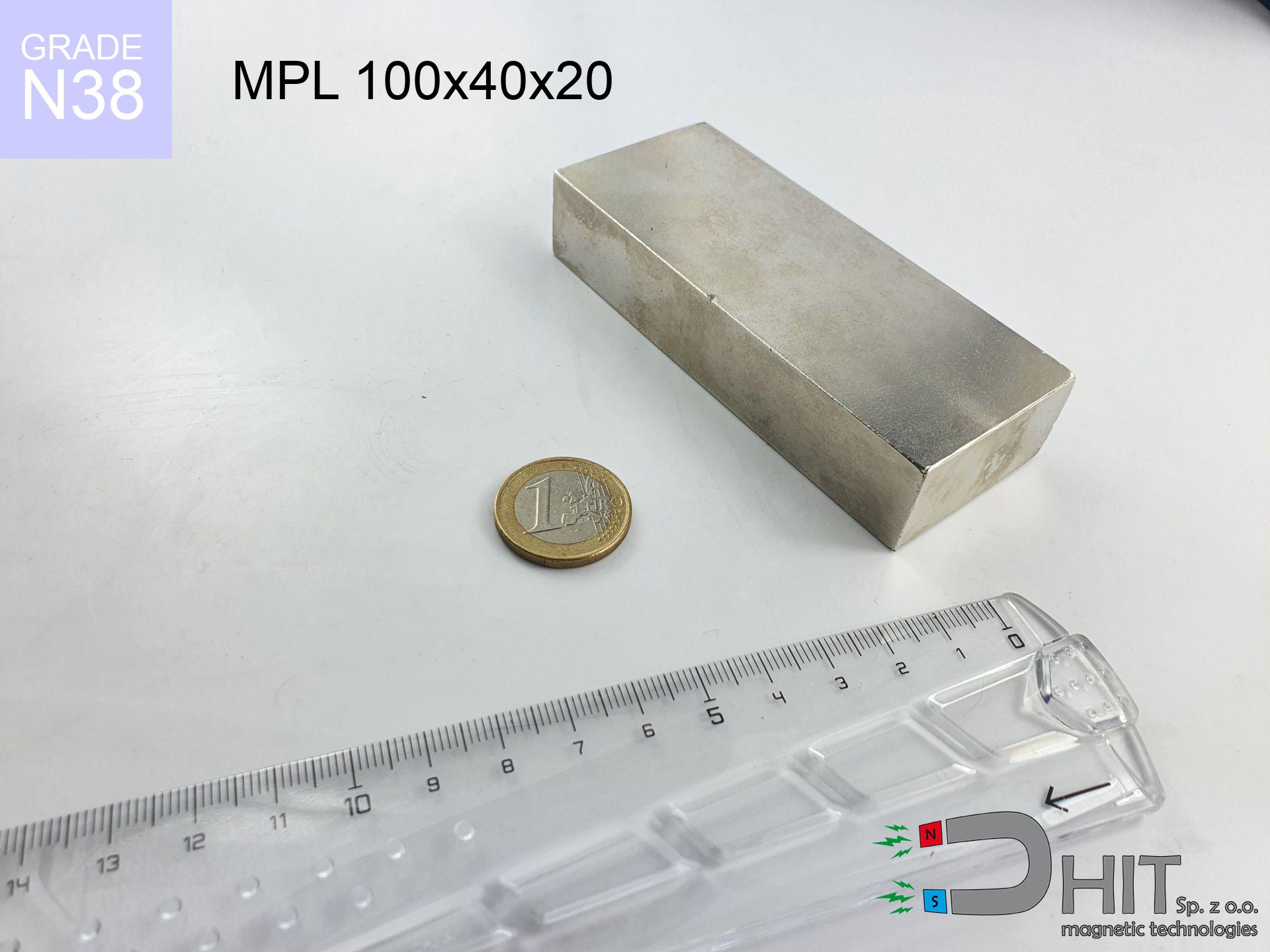UMGW 42x20x9 [M6] GW / N38 - magnetic holder internal thread
magnetic holder internal thread
Catalog no 180320
GTIN: 5906301813767
Diameter Ø [±0,1 mm]
42 mm
Height [±0,1 mm]
20 mm
Height [±0,1 mm]
9 mm
Weight
78 g
Load capacity
66 kg / 647.24 N
33.95 ZŁ with VAT / pcs + price for transport
27.60 ZŁ net + 23% VAT / pcs
bulk discounts:
Need more?Hunting for a discount?
Pick up the phone and ask
+48 888 99 98 98
otherwise drop us a message by means of
request form
through our site.
Lifting power and appearance of magnets can be tested with our
magnetic mass calculator.
Orders placed before 14:00 will be shipped the same business day.
Magnetic properties of material N38
Physical properties of sintered neodymium magnets Nd2Fe14B at 20°C
Shopping tips
Strengths as well as weaknesses of neodymium magnets.
Besides their high retention, neodymium magnets are valued for these benefits:
- Their power remains stable, and after approximately 10 years it decreases only by ~1% (theoretically),
- They have excellent resistance to magnetism drop as a result of opposing magnetic fields,
- Thanks to the reflective finish, the surface of nickel, gold, or silver gives an elegant appearance,
- Neodymium magnets deliver maximum magnetic induction on a small surface, which increases force concentration,
- Thanks to resistance to high temperature, they are able to function (depending on the shape) even at temperatures up to 230°C and higher...
- Possibility of detailed shaping and modifying to individual requirements,
- Key role in innovative solutions – they are commonly used in data components, electromotive mechanisms, medical equipment, as well as complex engineering applications.
- Relatively small size with high pulling force – neodymium magnets offer high power in compact dimensions, which allows their use in small systems
Characteristics of disadvantages of neodymium magnets: weaknesses and usage proposals
- At very strong impacts they can break, therefore we recommend placing them in special holders. A metal housing provides additional protection against damage, as well as increases the magnet's durability.
- When exposed to high temperature, neodymium magnets experience a drop in force. Often, when the temperature exceeds 80°C, their strength decreases (depending on the size and shape of the magnet). For those who need magnets for extreme conditions, we offer [AH] versions withstanding up to 230°C
- Magnets exposed to a humid environment can corrode. Therefore when using outdoors, we suggest using water-impermeable magnets made of rubber, plastic or other material resistant to moisture
- We suggest casing - magnetic holder, due to difficulties in realizing nuts inside the magnet and complex shapes.
- Health risk related to microscopic parts of magnets pose a threat, if swallowed, which is particularly important in the context of child health protection. Additionally, small elements of these magnets are able to disrupt the diagnostic process medical after entering the body.
- Higher cost of purchase is a significant factor to consider compared to ceramic magnets, especially in budget applications
Maximum magnetic pulling force – what it depends on?
Holding force of 66 kg is a theoretical maximum value executed under standard conditions:
- with the application of a sheet made of special test steel, guaranteeing full magnetic saturation
- with a thickness no less than 10 mm
- with a surface cleaned and smooth
- without any clearance between the magnet and steel
- for force applied at a right angle (pull-off, not shear)
- in stable room temperature
Lifting capacity in real conditions – factors
During everyday use, the actual lifting capacity is determined by a number of factors, ranked from most significant:
- Space between surfaces – every millimeter of distance (caused e.g. by veneer or unevenness) significantly weakens the magnet efficiency, often by half at just 0.5 mm.
- Direction of force – highest force is obtained only during perpendicular pulling. The force required to slide of the magnet along the plate is usually many times smaller (approx. 1/5 of the lifting capacity).
- Metal thickness – the thinner the sheet, the weaker the hold. Magnetic flux penetrates through instead of converting into lifting capacity.
- Steel grade – the best choice is high-permeability steel. Stainless steels may attract less.
- Surface finish – ideal contact is obtained only on smooth steel. Any scratches and bumps create air cushions, weakening the magnet.
- Temperature – heating the magnet causes a temporary drop of induction. It is worth remembering the maximum operating temperature for a given model.
* Lifting capacity was assessed by applying a polished steel plate of optimal thickness (min. 20 mm), under vertically applied force, in contrast under attempts to slide the magnet the holding force is lower. Additionally, even a small distance {between} the magnet’s surface and the plate decreases the lifting capacity.
Precautions when working with neodymium magnets
Phone sensors
Navigation devices and smartphones are highly susceptible to magnetism. Direct contact with a strong magnet can decalibrate the internal compass in your phone.
Nickel coating and allergies
Studies show that nickel (the usual finish) is a common allergen. For allergy sufferers, prevent touching magnets with bare hands or select versions in plastic housing.
Safe distance
Device Safety: Strong magnets can ruin payment cards and delicate electronics (heart implants, hearing aids, timepieces).
Machining danger
Mechanical processing of NdFeB material carries a risk of fire risk. Neodymium dust reacts violently with oxygen and is difficult to extinguish.
Adults only
Neodymium magnets are not intended for children. Accidental ingestion of several magnets may result in them pinching intestinal walls, which constitutes a severe health hazard and necessitates immediate surgery.
Pacemakers
Warning for patients: Powerful magnets affect electronics. Maintain minimum 30 cm distance or request help to handle the magnets.
Finger safety
Watch your fingers. Two powerful magnets will join instantly with a force of massive weight, destroying everything in their path. Exercise extreme caution!
Handling rules
Handle magnets consciously. Their immense force can surprise even professionals. Stay alert and do not underestimate their force.
Magnets are brittle
Beware of splinters. Magnets can explode upon uncontrolled impact, launching sharp fragments into the air. Eye protection is mandatory.
Do not overheat magnets
Do not overheat. Neodymium magnets are sensitive to heat. If you require operation above 80°C, ask us about special high-temperature series (H, SH, UH).
Important!
Need more info? Read our article: Are neodymium magnets dangerous?

![Magnetic holder with internal thread UMGW 42x20x9 [M6] GW / N38 Magnetic holder with internal thread UMGW 42x20x9 [M6] GW / N38](https://cdn3.dhit.pl/graphics/banners/magnet.webp)
![UMGW 42x20x9 [M6] GW / N38 - magnetic holder internal thread](https://cdn3.dhit.pl/graphics/products/um-42x20x9-m8-gw-god.jpg)
![UMGW 42x20x9 [M6] GW / N38 - magnetic holder internal thread - ujęcie 2](https://cdn3.dhit.pl/graphics/products/umgw-42x20x9-m8-gw-vam.jpg)
![SM 25x325 [2xM8] / N42 - magnetic separator SM 25x325 [2xM8] / N42 - magnetic separator](https://cdn3.dhit.pl/graphics/products/sm-25x325-2xm8-man.jpg)
![UMGW 36x18x8 [M8] GW / N38 - magnetic holder internal thread UMGW 36x18x8 [M8] GW / N38 - magnetic holder internal thread](https://cdn3.dhit.pl/graphics/products/um-36x18x8-m8-gw-foj.jpg)



